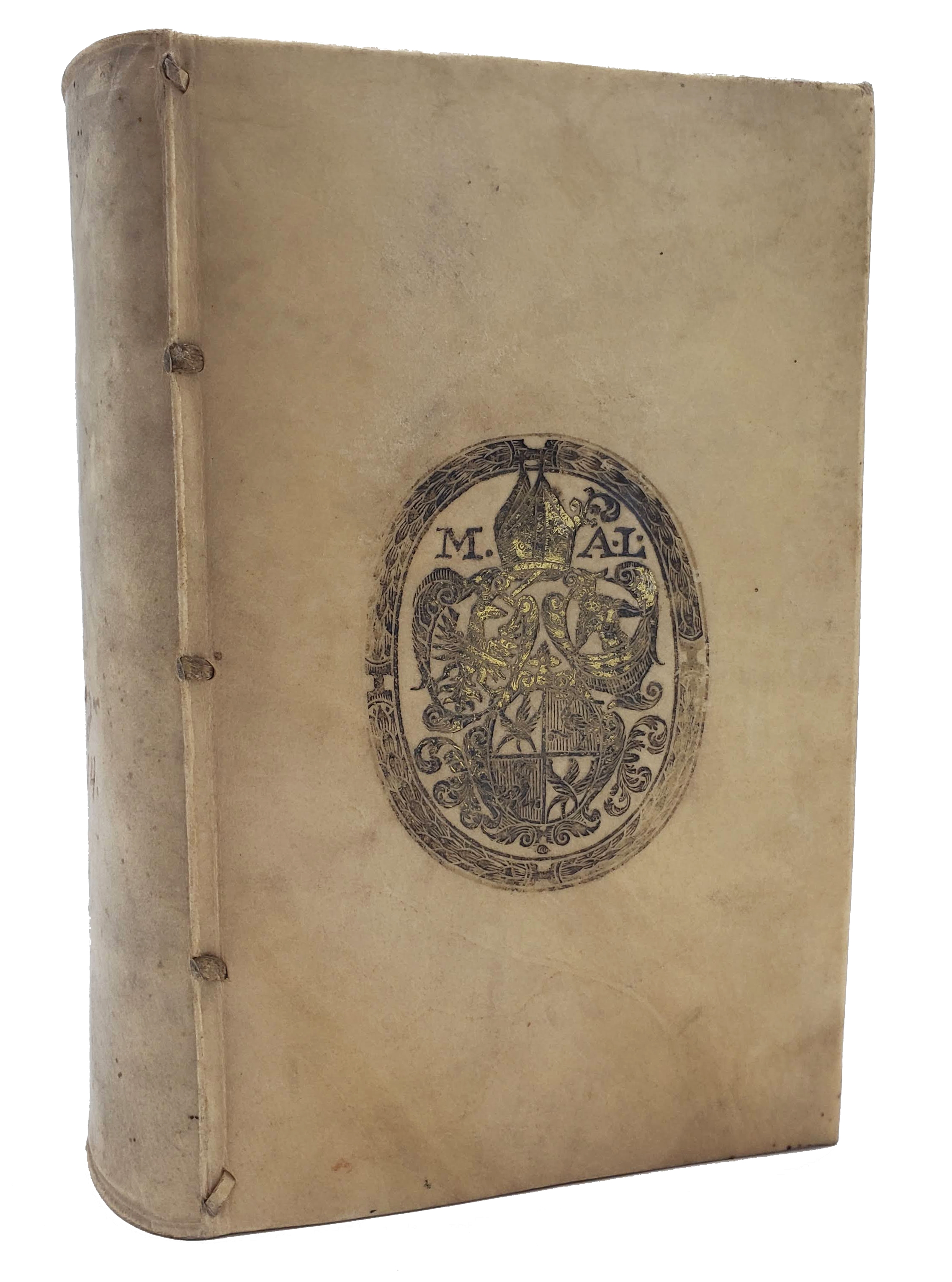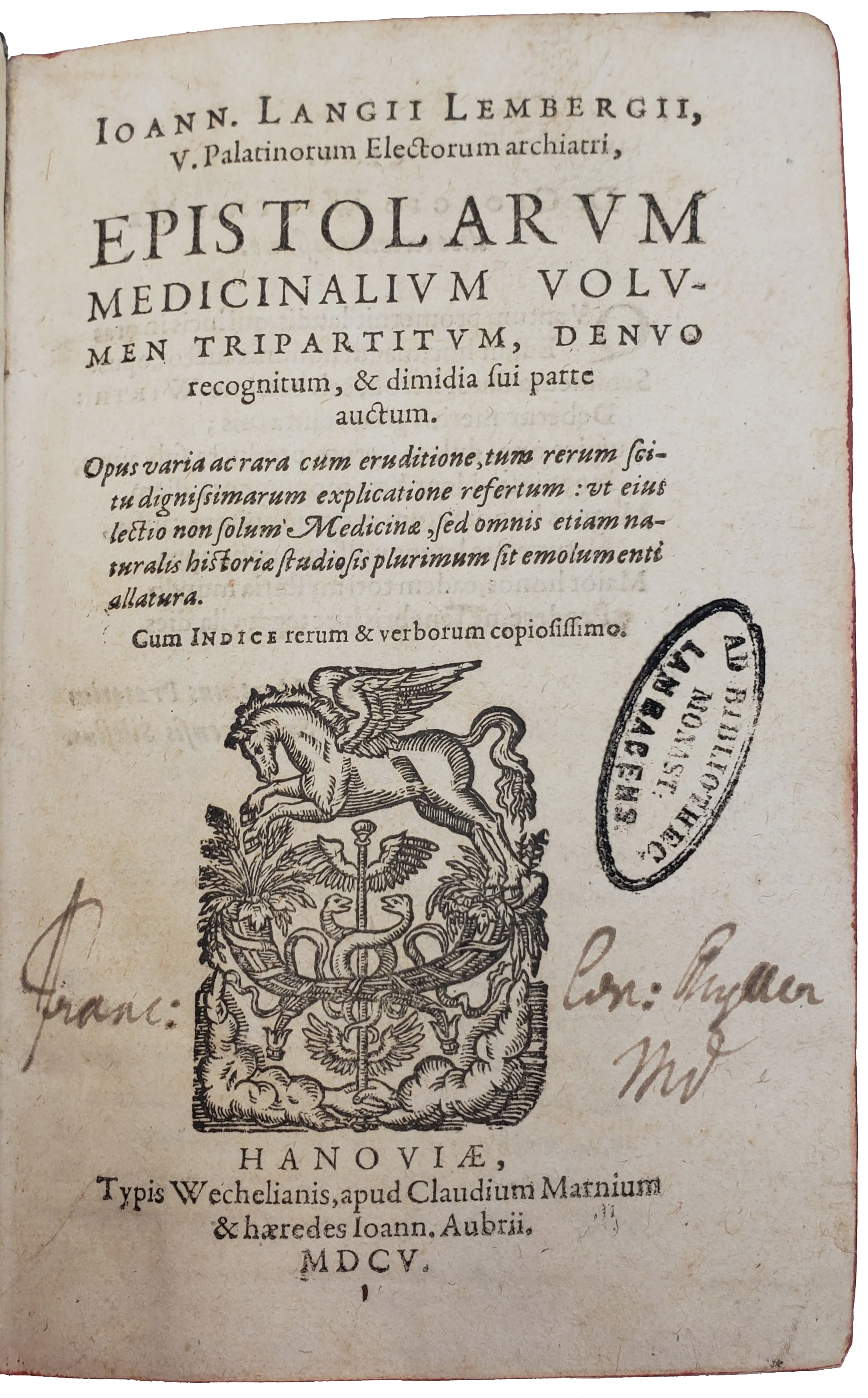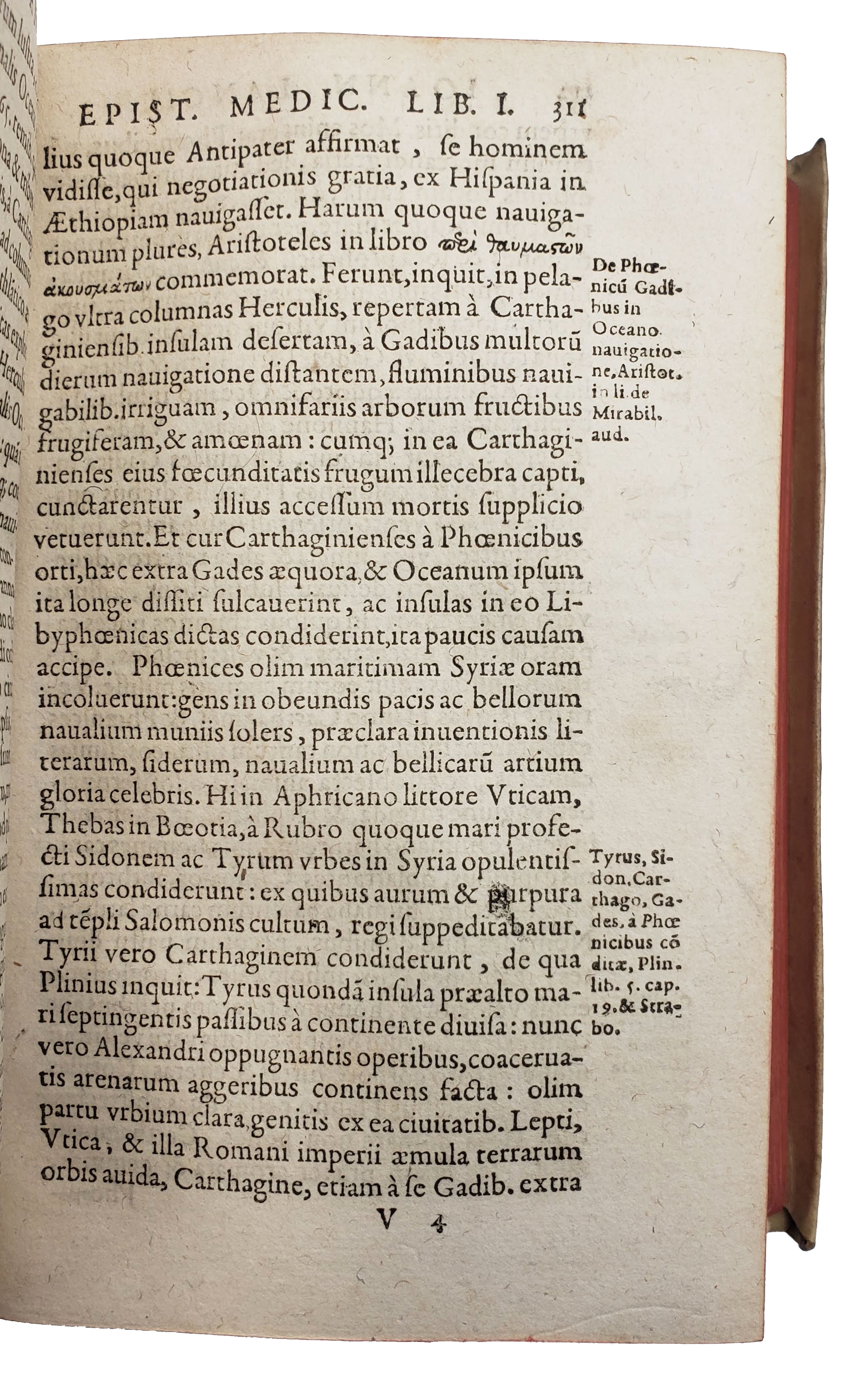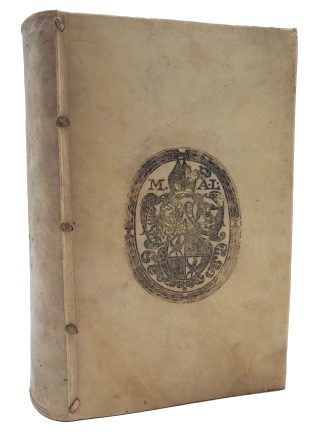LANGE, Johannes.
FROM LAMBACH ABBEY
Epistolarum medicinalium.
Hanau, Typis Wechelianis apud C. Marnium, 1605.£3,250.00
8vo. pp. [32], 1020, [2]. Roman letter, little Italic, occasional Greek. Printer’s device to title and last (blank), full-page author’s woodcut portrait to β2 recto, decorated initials and ornaments. Light age yellowing, occasional very minor marginal spotting. An excellent copy in contemporary vellum over boards, yapp edges, arms of Maximilian Pagl (1668-1725), Abbott of Lambach, gilt to covers (partly oxidised), ms title to spine, a.e.r., early C19 library stamp of Lambach Abbey and C17 autograph ‘Franc. Con. Muller md’ to title.
A charming, unsophisticated copy of the third complete edition of this collection of hundreds of medical epistles on physiology and treatments, with numerous references to Arabic medicine, and with some letters touching on subjects including the New World, magic, alchemy and astrology. Johannes Lange (1485-1565) was court physician at Heidelberg, trained in Italy. In 1519, he had delivered the closing oration in the Leipzig disputations between reformers, including Luther. He travelled all over Europe with Friedrick II for over 30 years, and even took part in wars against Suleiman. ‘Epistolarum medicinalium’ is a collection of short epistles on dozens of medical subjects, which originally appeared in parts in the C16, and were first published collectively after Lange’s death, in 1589. Several specify the original addressee. The first letter is a critique against ‘pseudomedici’, or impostors who pretend to be authoritative practitioners, followed by a letter on common medical errors and superstitions, with special reference to Germany. The remainder tackle a great variety of subjects, from cranial fractures to treatments for wounds, poxes, phlebotomy, British sweating fever, ‘erotic love’ (with a focus on teenage behaviour), sterility, ‘exotic medicaments’ (especially Arabic remedies known to the Greeks), poisons (according to Greek and Egyptian sources), gonorrhoea, women’s illnesses, specific conditions pertaining to young people, and so on. It also includes chapters on the relationship between illnesses and magic, astrology, prodigies, and demons, as well as on the origin of alchemy and the distillation of remedies. Letter 63 is devoted to the ‘islands of the new American world’. A final section examines various remedies, such as syrups, powders, decocts, and medical waters.
The cover bears the arms of Maximilian Pagl (1668-1725), Abbott of Lambach from 1705, who owned a substantial collection of medical books, c.30 of which are now at the NLM. The C17 autograph of the physician Franciscus Müller also appears in another medical book from the Abbott’s library. The Benedictine Monastery at Lambach dates back to 1040 and was the school of Adolf Hitler. He allegedly got the symbol of the swastika from the Hakenkreuz used in the decoration of the building. Franciscus Conradus Muller (fl. 1670s) was an Austrian physician, trained at Freiburg.
This ed. not in Wangensteen (who have partial 1554 ed.). VD17 23:240259M; USTC 2001052; Krivatsy 6661; Wellcome I, 3656 (earlier ed.); Alden 605/64: ‘De novis Americi orbis insulis. Elsewhere discovery of guaiacum is attrib. to King Ferdinand of Castile’. Not in Heirs of Hippocrates.




